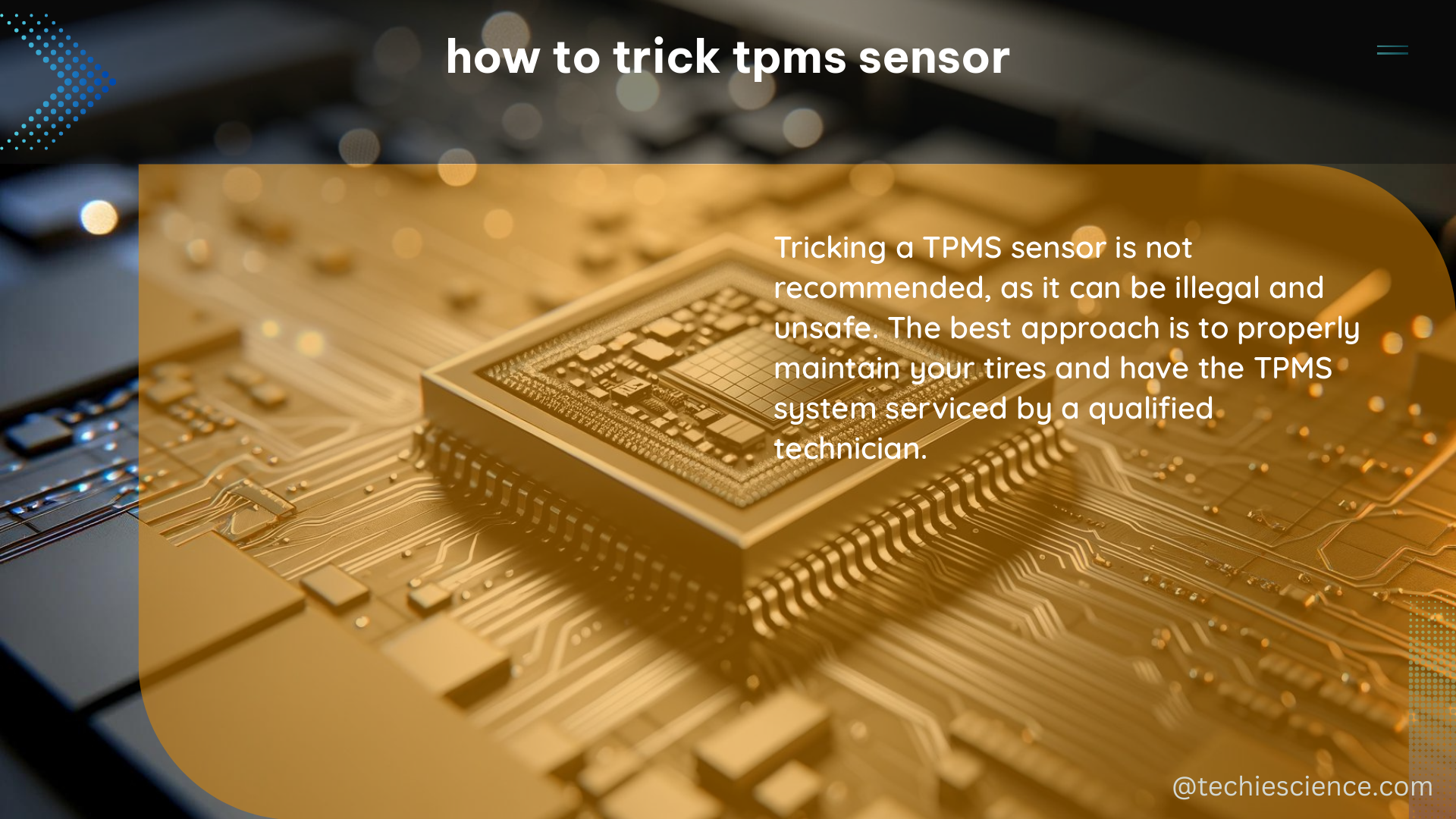Tire Pressure Monitoring Systems (TPMS) are designed to enhance vehicle safety by alerting drivers when tire pressure falls below a certain threshold. However, there may be instances where you need to temporarily bypass or trick the TPMS sensor, such as when using a tire repair kit or during specific driving conditions. This comprehensive guide will provide you with the technical details and step-by-step instructions on how to effectively trick a TPMS sensor.
Understanding TPMS Sensor Communication Protocols
TPMS sensors typically use one of two communication protocols: Radio Frequency (RF) or Bluetooth. Understanding the specific protocol used in your vehicle is crucial for effectively tricking the TPMS sensor.
RF TPMS Sensors
RF TPMS sensors operate at frequencies around 315 MHz or 433 MHz, depending on the regional regulations. These sensors transmit tire pressure data to the vehicle’s onboard computer using radio frequency signals. To trick an RF TPMS sensor, you can consider the following approaches:
-
Electromagnetic Interference (EMI) Disruption: By generating a strong electromagnetic field near the TPMS sensor, you can potentially disrupt the radio frequency signal, causing the sensor to report inaccurate or no data to the vehicle’s computer. This can be achieved using a high-powered electromagnetic device or a specialized TPMS sensor emulator.
-
Sensor Signal Spoofing: Another method is to create a false TPMS sensor signal and transmit it to the vehicle’s onboard computer, effectively tricking the system into believing the tire pressure is within the acceptable range. This can be done using a TPMS sensor emulator or a custom-built device that mimics the sensor’s signal.
Bluetooth TPMS Sensors
Bluetooth TPMS sensors operate in the 2.4 GHz ISM band, using Bluetooth Low Energy (BLE) technology to communicate with the vehicle’s onboard computer. Tricking a Bluetooth TPMS sensor requires a different approach:
-
Bluetooth Spoofing: By creating a Bluetooth device that mimics the TPMS sensor’s Bluetooth signature, you can potentially trick the vehicle’s onboard computer into accepting the false tire pressure data. This can be achieved using a Bluetooth-enabled microcontroller or a specialized TPMS sensor emulator.
-
Bluetooth Jamming: Alternatively, you can attempt to disrupt the Bluetooth communication between the TPMS sensor and the vehicle’s onboard computer by generating a strong Bluetooth signal in the same frequency range. This can be done using a Bluetooth jamming device or a software-defined radio (SDR) setup.
Potential Risks and Limitations

It’s important to note that tricking a TPMS sensor can have significant safety and legal implications. Bypassing the TPMS system can lead to increased risk of tire-related accidents, reduced fuel efficiency, and potential fines or penalties in some jurisdictions. Additionally, some TPMS systems may have advanced security features that make them more resistant to tampering.
Recommended Approach
Instead of attempting to trick the TPMS sensor, it is generally recommended to focus on proper TPMS sensor maintenance and troubleshooting. This includes regularly checking tire pressure, replacing worn or malfunctioning TPMS sensors, and ensuring the TPMS system is functioning correctly. By maintaining the TPMS system, you can ensure optimal vehicle safety and performance while avoiding the risks associated with sensor tampering.
Reference
- Analysis Techniques for Race Car Data Acquisition
- Wi-Fi tracking: Fingerprinting attacks and counter-measures
- TPMS Sensor Operation and Maintenance

The lambdageeks.com Core SME Team is a group of experienced subject matter experts from diverse scientific and technical fields including Physics, Chemistry, Technology,Electronics & Electrical Engineering, Automotive, Mechanical Engineering. Our team collaborates to create high-quality, well-researched articles on a wide range of science and technology topics for the lambdageeks.com website.
All Our Senior SME are having more than 7 Years of experience in the respective fields . They are either Working Industry Professionals or assocaited With different Universities. Refer Our Authors Page to get to know About our Core SMEs.